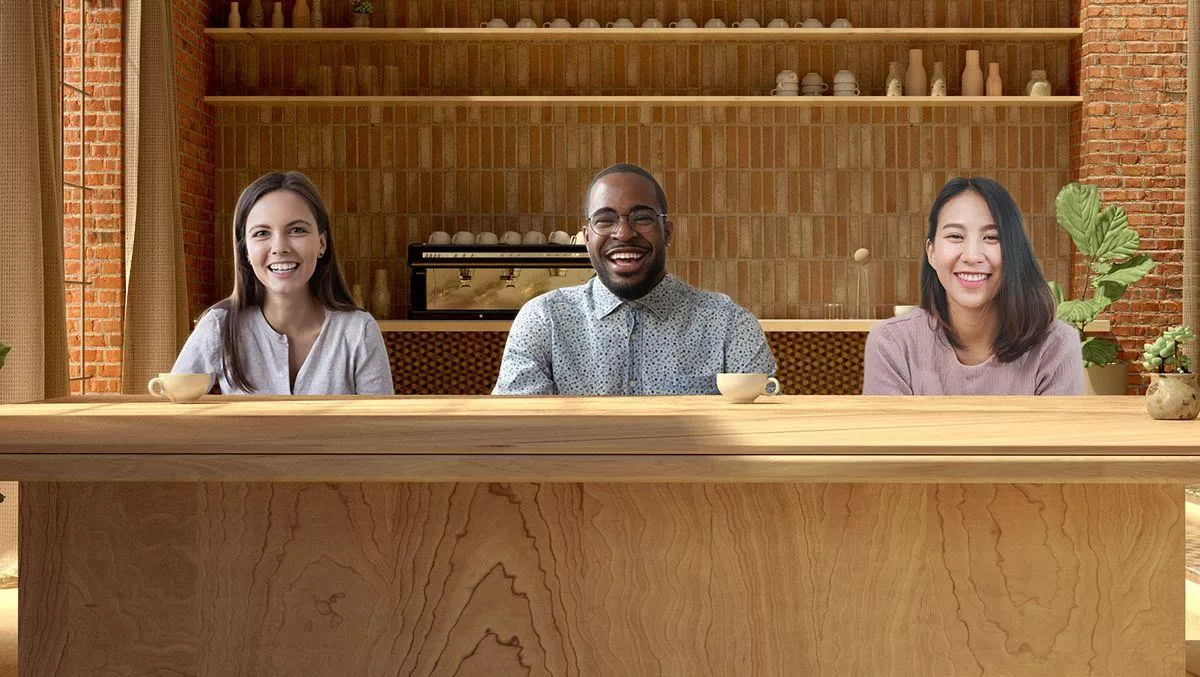
Microsoft spruces up Teams platform with several new features
Microsoft has spruced up its Teams collaborative video conferencing platform with a new set of features to help virtual interactions become more engaging as the world pivots towards a stronger combination of remote and in-office working.
New features include together mode, dynamic view, video filters, and reflect messaging extension, as well as many others.
Together mode: Microsoft Teams now provides the ability to create a shared background for participants, making it feel and look like they are in the same room – whether that room is an auditorium or the coffee shop.
Microsoft 365 corporate vice president Jared Spataro comments, "Together mode makes meetings more engaging by helping you focus on other people's faces and body language and making it easier to pick up on the non-verbal cues that are so important to human interaction. It's great for meetings in which multiple people will speak, such as brainstorms or roundtable discussions, because it makes it easier for participants to understand who is talking.
Dynamic view: This feature allows participants to personalise their view, including options for showing shared content and specific participants side-by-side.
Spataro says, "While Together mode offers an extraordinary new meeting experience, it's not intended for every meeting. We believe that traditional video meetings people use every day can also be more engaging and dynamic.
Video filters: Is the room too dark, or too light? Before joining a meeting, participants can now use filters to adjust lighting levels and soften the focus of the camera to customise their appearances.
Reflect messaging extension: This allows managers, leaders and teachers to easily check in on how their teams or students are feeling through questions in an online poll. The feature will be available in the coming weeks.
Live reactions: This feature enables participants to use emojis to show their reactions.
Chat bubbles: Chats sent during a Teams meeting will soon surface on the screens of all meeting participants, making the chat more central to the conversation.
Speaker attribution for live captions and transcripts: This will build on current live transcript features by identifying individual speakers. Participants joining from a conference room device will be attributed to the room rather than to the individuals in the room.
Other updates include:
- Interactive meetings for up to 1000 participants and view-only support for up to 20,000 participants
- Microsoft Whiteboard updates with new features such as sticky notes and drag and drop functionality
- A new Tasks app with easy access to other Microsoft software such as Outlook
- Suggested replies in Teams chats
- Cortana in Teams
- Microsoft Teams displays for home offices
- Touchless meeting experiences will soon launch for Surface Hub.
All these features are designed to complement the in-office and remote collaboration experience – something that is now critical for businesses and educators worldwide.
Microsoft's second Work Trend Index polled more than 2000 remote workers in six countries and found that although remote work is nor more popular, physical offices are in no danger of disappearing.
For example, 82% of managers expect to provide more flexible work-from-home (WFH) policies post-pandemic, while a slightly lower percentage (71%) would like to have that flexibility.
Many people (52%) also report feeling more included as a remote contributor. As one respondent says, remote participants used to be invisible, but they aren't invisible anymore.
Microsoft says that chat messages within Teams meetings have also increased tenfold from the period of March 1 to June 1.
Remote working does come with downsides, however. Only 35% of respondents have a dedicated home office so complaints about ergonomics, distractions, and connection issues are a major pain point.
"In all, this global shift to remote work has created both opportunities and challenges for the future of our workforces," Microsoft states.
"As we all navigate the accelerated change of an unprecedented time, we're holding true to our mission to help every individual and every organization on the planet achieve more.

